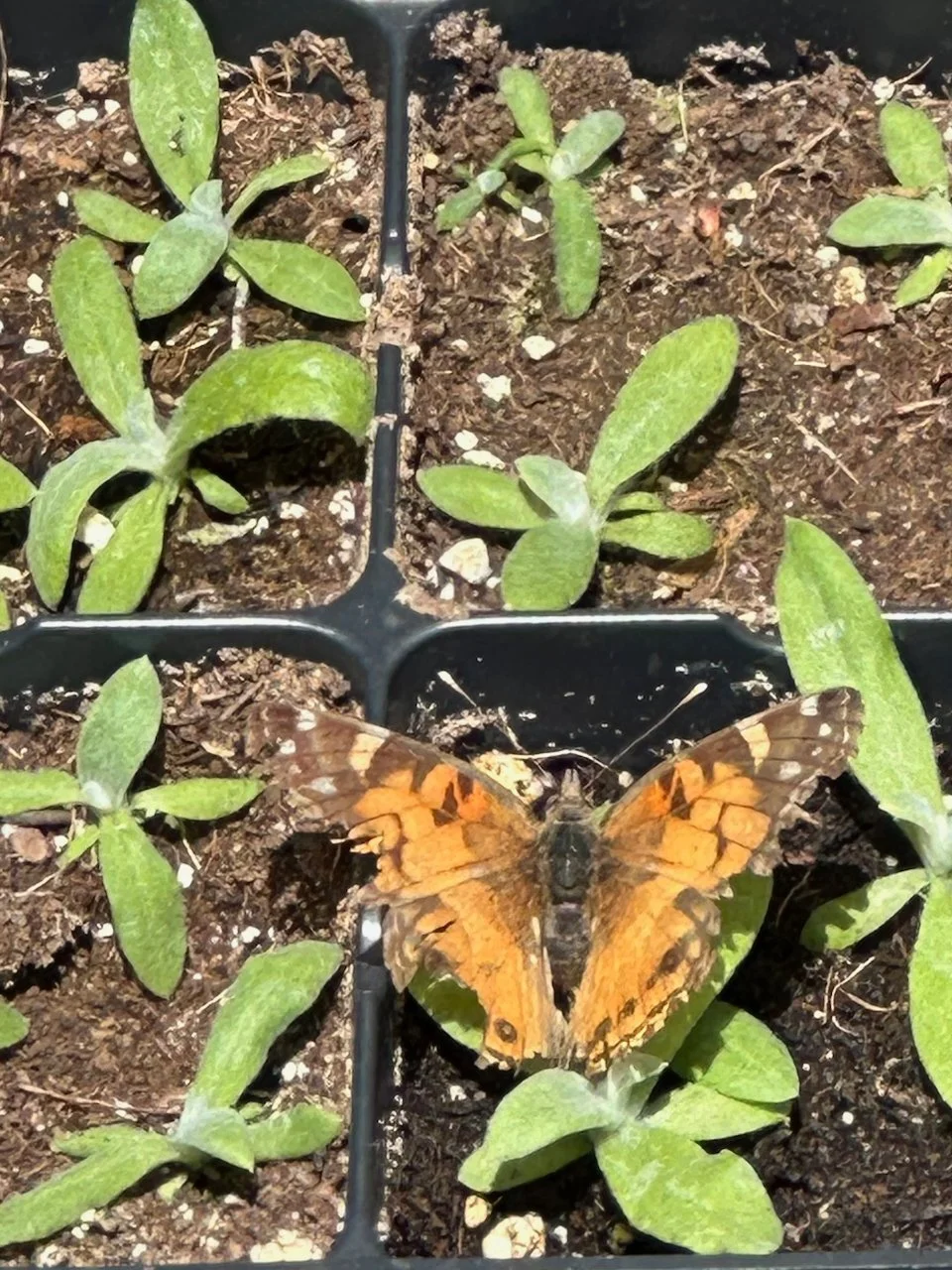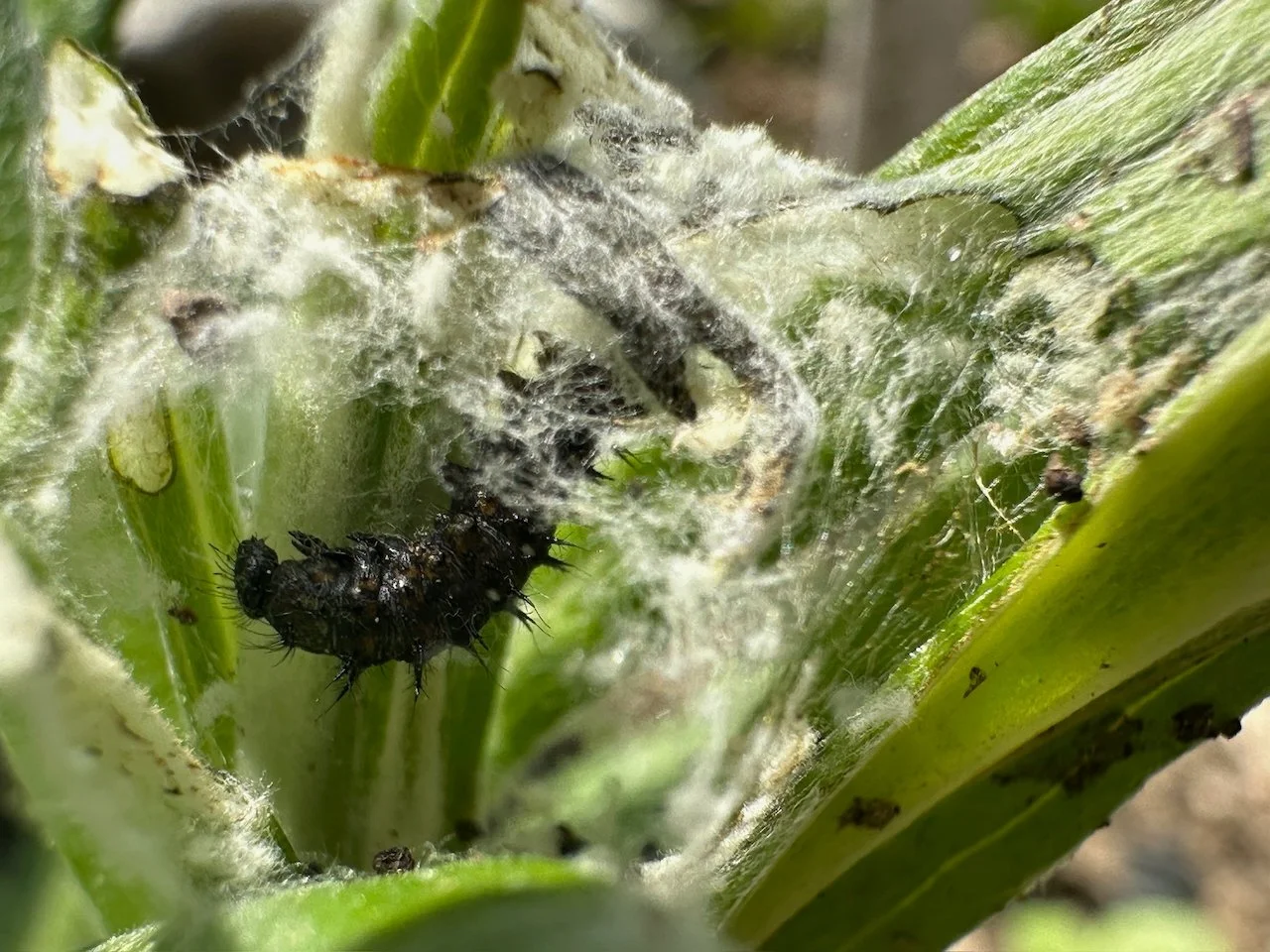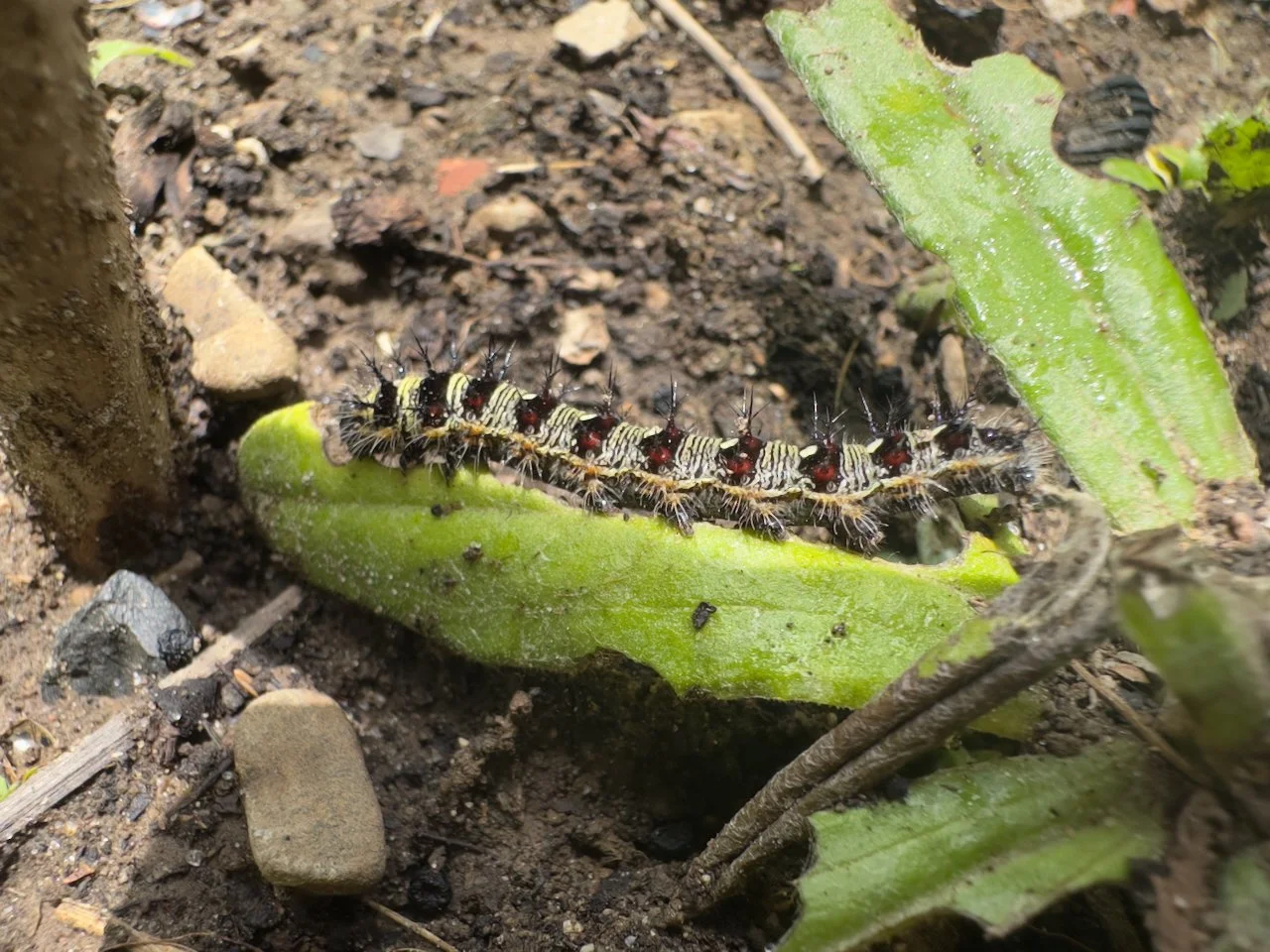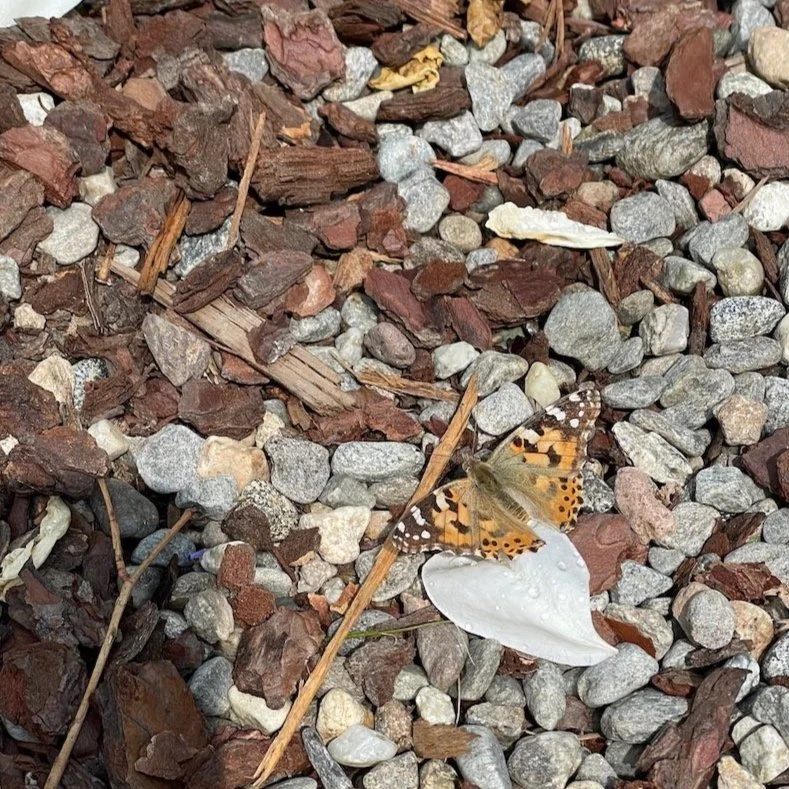The American Lady
The American Lady: Ontario’s Understated Butterfly Star
The American Lady (Vanessa virginiensis) is a dazzling sight across Ontario during the warmer months, fluttering low over meadows and garden beds with vibrant wings and whimsical charm. Though often mistaken for its more famous cousin, the Painted Lady (V. cardui), this butterfly carries its own fascinating story filled with transformation, migration and ecological magic.
Habitat & Distribution
This species thrives across North America, including Ontario, where it favours open and disturbed spaces such as meadows, parks, forest edges and roadside verges. It is most easily identified by the two large eyespots on the underside of its hindwings, a key distinction from the four smaller spots of the Painted Lady.
Appearance & Identification
With a wingspan of about 2 inches (5cm), the American Lady dazzles with orange, brown and black upper wings, punctuated by a white spot in the orange cell on the upper forewing. The undersides are earthy with dramatic eye markings that help deter predators.
Side-by-Side ID Tip: Eyespot Clues
While both species share striking orange and brown upper wings, the American Lady sports a small white spot tucked inside the orange forewing. It’s a subtle clue — often hard to catch unless the butterfly is holding perfectly still (which they rarely do!). That’s why the underside markings offer a much quicker and more reliable ID in the field.
American Lady (Vanessa virginiensis) — has two bold, marble-like eyespots on the underside of each hindwing.
Painted Lady (Vanessa cardui) — shows four smaller eyespots, more evenly spaced and less dramatic.
Life Cycle & Migration
Like many butterflies, it undergoes a complete metamorphosis: Egg → Caterpillar → Chrysalis → Adult. In warmer regions, multiple generations emerge each year.
A female American Lady lays tiny eggs on newly sprouted Pearly Everlasting in early spring.
| 🦋 Stage | ⏳ Duration |
|---|---|
| Egg | 5–7 days |
| Caterpillar | 2–3 weeks |
| Chrysalis | 7–10 days |
| Adult | 2–4 weeks (wild) |
In Ontario, they do not overwinter as adults. Instead, they migrate southward in autumn and are replaced each spring by new arrivals from southern parts of the United States. Unlike their globetrotting cousin, the Painted Lady (Vanessa cardui), which can migrate thousands of kilometres, the American Lady’s journey is less extensively documented but still impressive. While they may not travel as far, they recolonize northern regions like Ontario through successive generations, navigating seasonal changes in a quieter but no less remarkable relay of movement.
Caterpillar Behaviour: Nightlife & Leaf Nests
The larvae are spiny, black-and-white caterpillars that primarily feed at night. This nocturnal lifestyle helps them avoid predators and maintain better temperature control. During the day, they shelter inside leaf shelters or “silken tents” that they spin from host plant leaves, such as Pearly Everlasting.
Host Plants: The Nursery Grounds
Female butterflies lay eggs on particular “host plants” where the caterpillars hatch and grow. In Ontario, key hosts include:
| 🌿 Plant Name | 🌼 Scientific Name | 🌍 Notes |
|---|---|---|
| Pearly Everlasting | Anaphalis margaritacea | Top host, roadsides and meadows |
| Plantain-leaved Pussytoes | Antennaria plantaginifolia | Fuzzy, low sheltering plant |
| Wormwood | Artemisia spp. | Aromatic, open dry areas |
| Burdock | Arctium spp. | Big-leaved and common in wild lots |
| Mallow | Malva spp. | Garden-friendly with soft foliage |
Other notable hosts include thistles, clovers, ironweed and alfalfa, all of which provide excellent food for growing caterpillars.
Hungry American Lady caterpillars feeding on Pearly Everlasting, a key host plant in Ontario.
Nectar Plants: Fuel for Flight
Adult butterflies rely on nectar-rich plants. To support them in gardens or meadows, consider planting these native Ontario wildflowers:
| 🌸 Common Name | 🌿 Scientific Name | 🌼 Bloom Time | 🌞 Sun Preference |
|---|---|---|---|
| New England Aster | Symphyotrichum novae-angliae | Late summer to autumn | Sun to part shade |
| Butterfly Milkweed | Asclepias tuberosa | Early to mid-summer | Full sun, dry soil |
| Wild Bergamot | Monarda fistulosa | Mid to late summer | Sun to part shade |
| Joe-Pye Weed | Eutrochium maculatum | Late summer | Moist soil, full sun |
| Purple Coneflower | Echinacea purpurea | Mid to late summer | Full sun |
These plants do more than beautify a space. They support pollinator diversity and offer crucial fuel for butterflies during their travels.
Role in the Ecosystem
The American Lady contributes meaningfully as a pollinator, helping native and cultivated plants reproduce. The caterpillars also aid in controlling invasive weeds such as thistles. These small interactions ripple outward to benefit broader biodiversity.
By welcoming native plants into your yard, or simply tuning in on your next nature walk, you can become part of this species’ seasonal story. The American Lady is an Ontario treasure with big wings and an even bigger journey.
(A Painted Lady butterfly showing its telltale orange forewing — notice the missing white spot that helps distinguish it from the American Lady)
Fun Facts for Budding Naturalists
🎨 Colourful & Cool
They have orange and brown wings with two big eyespots underneath—like built-in sunglasses to scare off predators!
Their wingspan is about 2 inches, which is roughly the size of a cookie.
🚀 Super Flyers
These butterflies can fly up to 20 miles per hour—that’s faster than most people can run!
They’re known for long-distance travel, sometimes migrating thousands of miles across continents.
🐣 Baby Boom
A single female can lay up to 500 eggs—that’s a LOT of baby caterpillars!
Their caterpillars are nocturnal, meaning they like to munch on leaves at night while everyone else is asleep.
They are eating machines! They are able to consume up to 200 times their birth weight in only two weeks!
🌿 Nature Helpers
They love sipping nectar from flowers, which helps pollinate plants and keep gardens blooming.
Caterpillars often eat invasive weeds like thistles, which helps keep those pesky plants in check
Like this Painted Lady butterfly, the American Lady also lands on moist soil or gravel to absorb vital minerals, a behaviour known as puddling.








